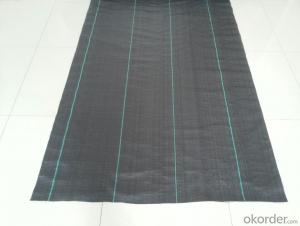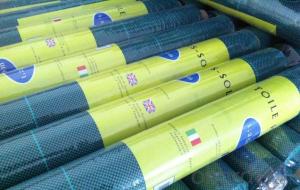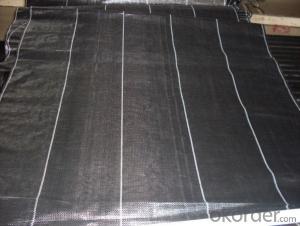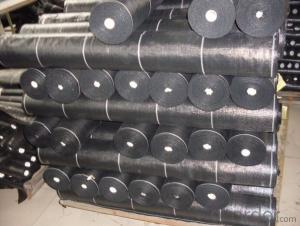Coir Weed Mats for Nursery (Mulch Mats)
- Loading Port:
- Qingdao
- Payment Terms:
- TT OR LC
- Min Order Qty:
- 500 m²
- Supply Capability:
- 500000 m²/month
OKorder Service Pledge
OKorder Financial Service
You Might Also Like
Product Description
The weed control mat is made of environmentally friendly raw materials, pp woven fabric. It used to prevent the growth of weed, without the use of potentially dangerous chemical sprays or labor intensive hoeing. Once installed, weed mat will continue providing protection for years without maintenance.
They are permeable fabrics, which allow air, water and nutrients to pass through, and designed to block out the sun to reduce photosynthesis and stop weed growth.
Specification
ROPERTY | ASTM TEST METHOD | Minimum Average | Minimum Average |
Mass per unit Area | ASTM D-5261 | 3.0 oz/yd2 | 100 g/m2 |
Grab Tensile | ASTM D-4632 | 145 lbs | 660 N |
Grab Elongation | ASTM D-4632 | 15% | 15% |
Trapezoid Tear | ASTM D-4533 | 55 lbs | 245 N |
Water Flow Rate | ASTM D-4491 | 5 gal/min/ft2 | 203 L/min/m2 |
UV Resistance | ASTM D-4355 | 70% @ 500 hrs | 70% @ 500 hrs |
ROLL DIMENSIONS | |||
Roll Width | 0.9m (3’) | 1.8m (6') | 2.7m (9') |
Roll Length | 91.4m (300’) | ||
Roll Weight | 8kgs (17lbs) | 16kgs (34lbs) | 24kgs (52bs) |
1. Material: PP, virgin material or recycled material.
2. Weight: 63gsm-200gsm
3. Width: 30cm-500cm
4. Length: As per ur request.
5. Color: Black with green/white grid,or any color is
available.
6. Tearing strength: From 0.5 to 2.2kN
7. Mesh: 8*8,9*9,10*10, 11*11,12*12,13*13,14*14
8. UV stabilized: Up to your request.
9. Packing: In rolls (25m,50m,100m,200m,500m,
1000m,2000m) or pieces.
10. Quantity:12ton/20', 25ton/40'
11. Delivery time: 25-35 days.
12. Payment Term: L/C, T/T(30% of total amount deposit
and 70%).
13. MOQ:1x20'
Advantage:
1.Strong and Durable, anti-corruption,Inhibition of insect pest.
2. Air-ventilation , UV-protection and anti-weather.
3. Does not affect the growth of the crops,Weed-control and keep soil moist, ventilation.
4. Long serving time, which can give 5-8 year guarantee time.
5. Suitable for cultivating all kinds of plant.
Features
1. Weed suppressant and drainage control landscaping fabric
2. Easy to use, Environmentally friendly
3. Allows water, air and nutrients through, suppressing weeds without the use of chemicals
4. Reduces the level of watering required due to the slower rate of water evaporation
Application
1. Excellent Weed Control
2. Moisture, fertilizers, air reach plants to allow for healthy soil
3. Good water and air permeability
4. Exceptional toughness and strength
5. Durable, tear-resistant; won't rot or mildew
6. Lightweight, easy to install, follows natural ground contours
7. Ideal for use in landscaped beds, under decks and walkways.
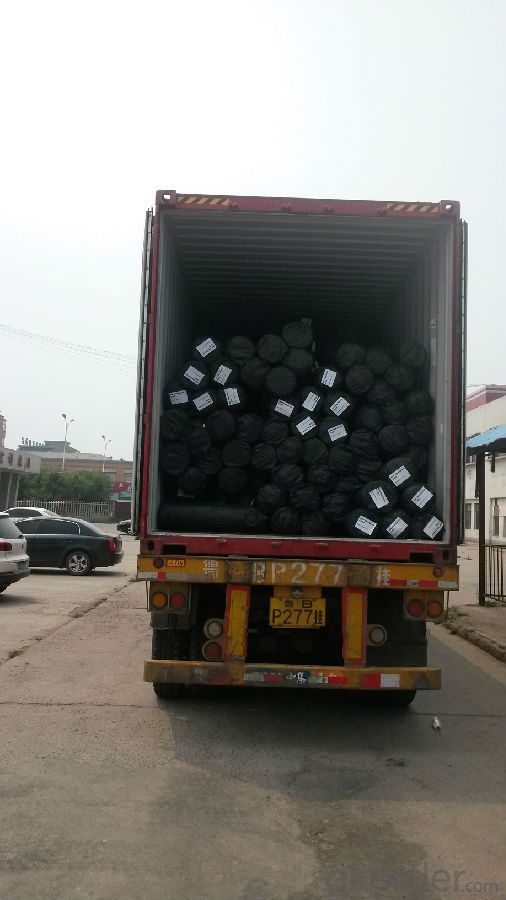

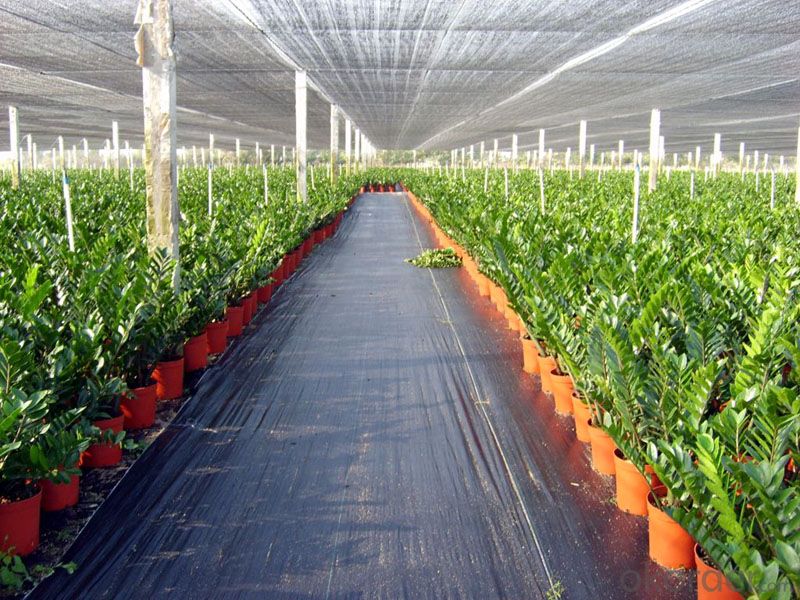
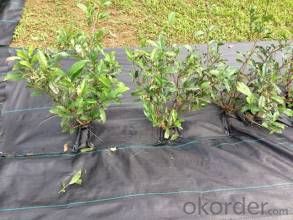
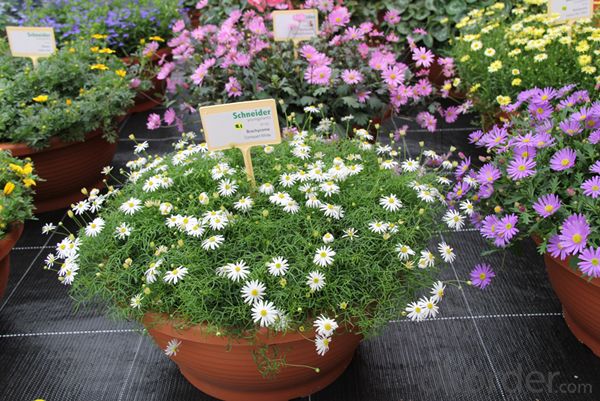
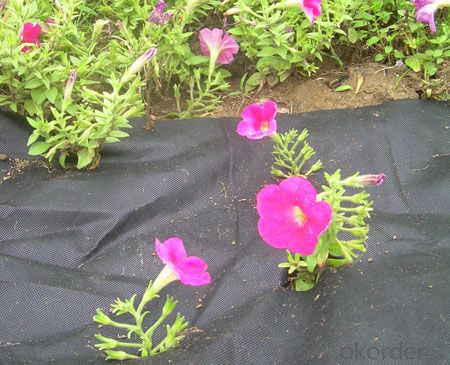
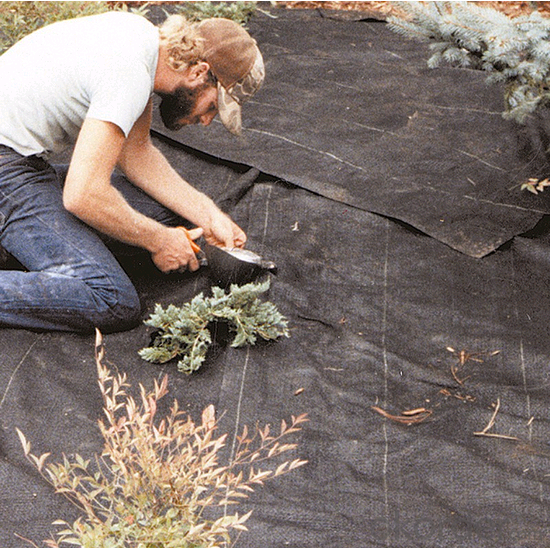
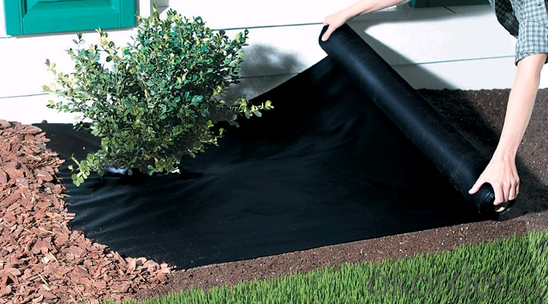
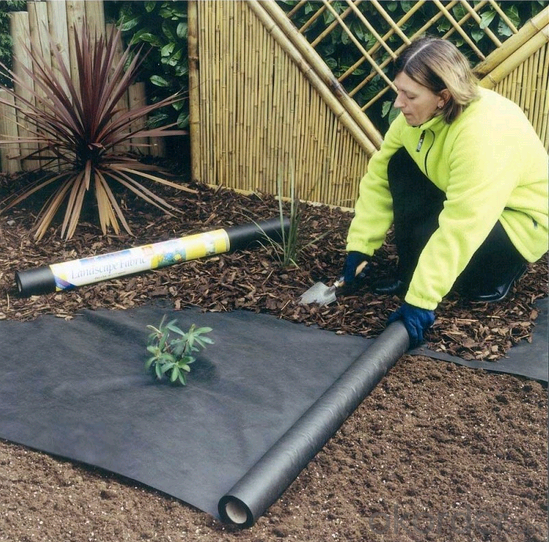
FAQ
1, Samples Policy
Samples are free, but the freight is on customers' charge
Samples will usually be sent out in one day.
2, Prices
As for the prices, we need you to provide us weight, color, width and usage so that
we can quote you best.
3, How to place an order?
Inquiry
Reply
Sample
Contract
Receiving deposit& production
Testing& Packing
Delivery
Receiving
- Q:Can geotextiles be used in mining tailings management?
- Yes, geotextiles can be used in mining tailings management. Geotextiles are widely used in mining operations to improve the stability and containment of tailings, reduce erosion, and enhance filtration and drainage. They can be employed in various applications such as lining tailings storage facilities, constructing embankments, and creating barriers to prevent seepage. By providing reinforcement and filtration, geotextiles help in managing and mitigating the environmental impact associated with mining tailings.
- Q:How do geotextiles help with soil stabilization in geocell applications?
- Geotextiles aid in soil stabilization in geocell applications by providing a barrier between the soil and the geocell structure. This helps to prevent soil erosion, promote proper drainage, and increase the overall strength and stability of the soil.
- Q:Can geotextiles be used in the protection of groundwater sources?
- Yes, geotextiles can be used in the protection of groundwater sources. Geotextiles are permeable fabrics that can effectively filter out impurities and prevent soil erosion. By installing geotextiles in areas where groundwater sources are vulnerable to contamination or excessive sedimentation, they can act as a barrier, allowing water to pass through while trapping pollutants and preventing them from reaching the groundwater. This helps to maintain the quality and purity of groundwater sources, ensuring their long-term protection.
- Q:What are the considerations for geotextile selection in landfill projects?
- The considerations for geotextile selection in landfill projects include factors such as the required strength and durability of the geotextile, its ability to resist punctures and tearing, its compatibility with the waste material, and its resistance to chemical degradation. Other factors to consider include the geotextile's permeability, its ability to retain soil particles while allowing for proper drainage, and its cost-effectiveness. Additionally, the geotextile should be selected based on its compliance with regulatory requirements and standards for landfill construction.
- Q:How do geotextiles help with reinforcement of geogrid retaining walls?
- Geotextiles help with reinforcement of geogrid retaining walls by providing additional strength and stability. They are placed between the geogrid and the backfill soil, acting as a separation layer. Geotextiles prevent the migration of fine particles from the soil into the geogrid, reducing the risk of clogging and maintaining the proper functioning of the wall. Additionally, they distribute the load more evenly across the geogrid, enhancing its tensile strength and overall performance.
- Q:What is a geotextile?
- A geotextile is a synthetic material specifically designed for use in various civil engineering and construction applications. It is typically made from polyester or polypropylene fibers and is used to stabilize soil, separate different layers of soil, and provide drainage and filtration in infrastructure projects such as roads, landfills, and retaining walls. Geotextiles are essential in preventing soil erosion, improving soil strength, and increasing the lifespan of infrastructure projects.
- Q:How do geotextiles help with filtration in wastewater treatment systems?
- Geotextiles serve as a crucial component in wastewater treatment systems by providing effective filtration. These specialized fabrics have excellent permeability, allowing water to pass through while retaining solid particles and contaminants. Geotextiles act as a physical barrier, preventing the clogging of drainage systems and ensuring efficient flow of water through the treatment process. They also assist in the separation and retention of suspended solids, which aids in the removal of pollutants, sediments, and organic matter from wastewater. Overall, geotextiles enhance the filtration capacity of wastewater treatment systems, leading to improved water quality and environmental sustainability.
- Q:Are geotextiles suitable for use in seismic zones?
- Yes, geotextiles are suitable for use in seismic zones. Geotextiles are engineered materials designed to provide reinforcement, filtration, and separation functions in various civil engineering applications, including seismic zones. They can help improve ground stability, prevent soil erosion, and enhance drainage, which are crucial factors in earthquake-prone areas. Additionally, geotextiles have been successfully used in earthquake-resistant structures to mitigate the effects of ground shaking and soil liquefaction. Therefore, geotextiles are a viable and effective solution for construction and infrastructure development in seismic zones.
- Q:Are geotextiles resistant to UV radiation?
- Yes, geotextiles are generally resistant to UV radiation.
1. Manufacturer Overview |
|
|---|---|
| Location | |
| Year Established | |
| Annual Output Value | |
| Main Markets | |
| Company Certifications | |
2. Manufacturer Certificates |
|
|---|---|
| a) Certification Name | |
| Range | |
| Reference | |
| Validity Period | |
3. Manufacturer Capability |
|
|---|---|
| a)Trade Capacity | |
| Nearest Port | |
| Export Percentage | |
| No.of Employees in Trade Department | |
| Language Spoken: | |
| b)Factory Information | |
| Factory Size: | |
| No. of Production Lines | |
| Contract Manufacturing | |
| Product Price Range | |
Send your message to us
Coir Weed Mats for Nursery (Mulch Mats)
- Loading Port:
- Qingdao
- Payment Terms:
- TT OR LC
- Min Order Qty:
- 500 m²
- Supply Capability:
- 500000 m²/month
OKorder Service Pledge
OKorder Financial Service
Similar products
New products
Hot products
Hot Searches
Related keywords
